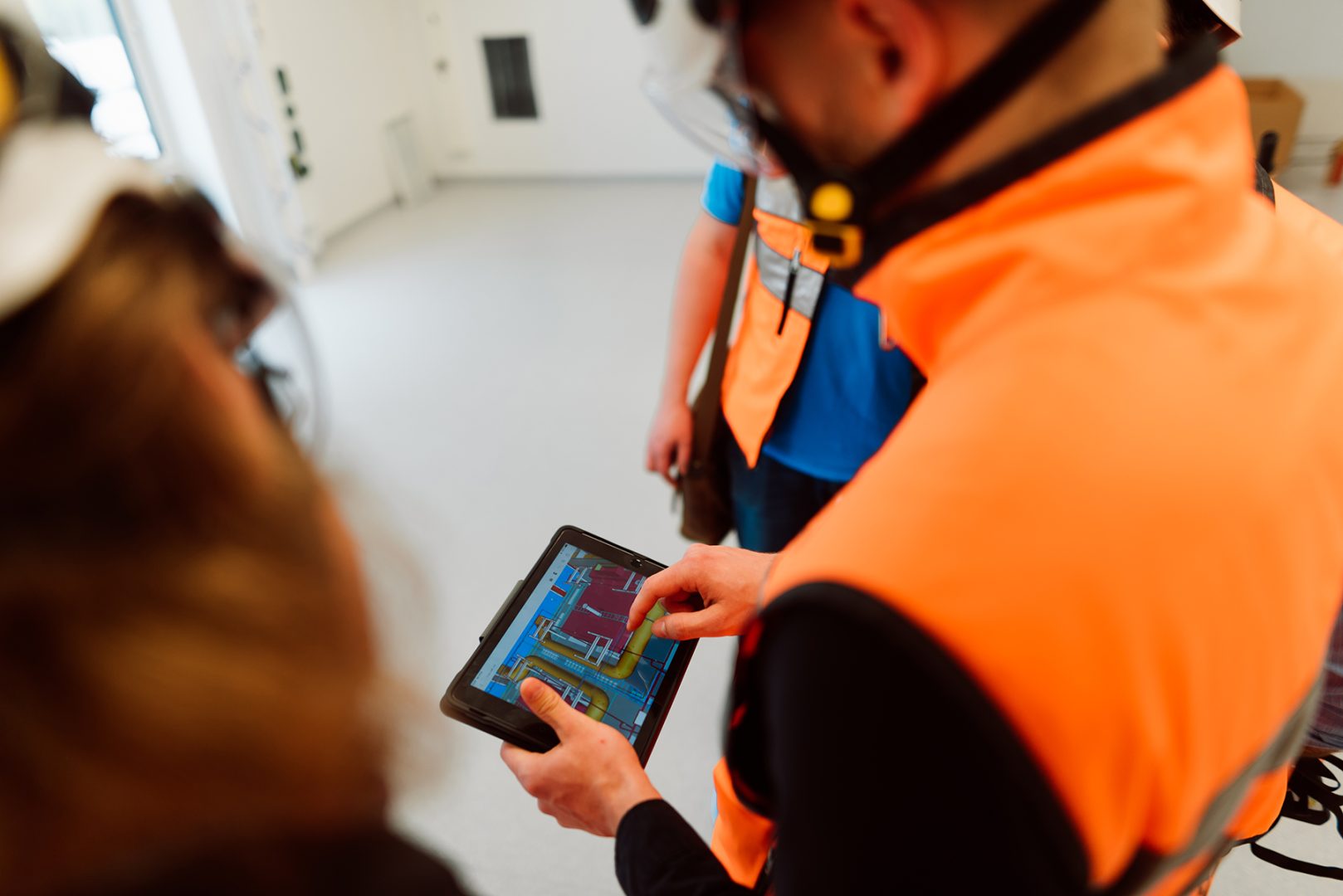
4D planning
4D streamlines the planning of construction project schedules as it can be used to integrate all of the schedules. A visual snapshot of the project, 4D improves the productivity of construction by preventing schedule and cost-related risks.
From schedule monitoring to forecasting
It is a good idea to allocate resources to scheduling in the construction project as the work will pay for itself many times over. Introducing 4D scheduling to the project early on makes it possible to take control of the schedule instead of monitoring it. This brings clear cost savings.
The 4D schedule is not a static entity, but updated in real time. It is also easy to make changes and the schedule adjusts to the actual situation. In terms of accuracy, the 4D schedule beats traditional linear schedules hands down as the schedule extends all the way down to the resource and number of personnel level.

How does 4D scheduling benefit the client?
4D scheduling provides the client with an overall view of the project’s progress. 4D increases transparency in the project and makes it easier to get a better overall view.
For this, the client does not necessarily need to acquire new technology as 4D planning is available as a service. In this case, the 4D designer supports the client or developer consultant.

4D as a tool for contractors
The 4D schedule integrates all construction and design schedules. This makes life much easier for the contractor as the schedules can be viewed in one package. This makes it easier for the contractor to plan the contract and work phases. The 4D schedule is updated in real time, providing an actual virtual snapshot of the site.
We can either take the role of 4D designer for the contractor or guide the project manager in the use of 4D scheduling.
4D ensures the feasibility of projects
4D visualisation visualises the aspects relevant to the construction project. 4D planning assists with site management and indicates the amount of time allocated to the various work phases as well as the progress of construction. 4D helps demonstrate the feasibility of the construction schedule as visualisation makes it easier to spot any errors made in phasing, for example.
The 4D schedule makes it possible to view the design and implementation progress in parallel or the difference between the construction schedule and its realisation. We use different colours to illustrate what has already been achieved on the site and the stage at which the construction should be.
4D scheduling involves enriching data models. We record the working time required for installation for each object of the model, which means that the model indicates the workloads by work type at a certain work phase and location. As such, 4D scheduling is an excellent starting point, for example, for a phase schedule. Site-specific workloads can also be produced at the beginning of the project on the basis of the spatial model.
As infrastructure projects comprise numerous layers of data, 4D helps get a better overall grasp of the situation compared to traditional linear schedules.
Sami Kari, Production Manager at Destia
4D also supports design
Design schedules can be visualised using designated views for different spaces and areas so that the designer knows immediately the next area requiring implementable plans. In addition to visualisation, data can be transferred and deadlines exported to the design tools, enabling the designer to filter out only those structures for which plans are next required. A reliable snapshot supports production, and tasks flow steadily and predictably from one phase to another.
What is the best project phase to implement the 4D schedule?
4D planning can be implemented during different project phases. The best result is achieved when schedules are created as 4D schedules right from the start. In this way, surprises can be avoided and scheduling and cost risks managed in a cost-effective way.
The project can kick off immediately once the architect has published the first spatial model. As the project progresses and the data becomes more accurate, spatial model-based data will be replaced by building component-level models in different design areas.
We were able to demolish 7.7 hectares of floor space in half a year, or twice the speed of a typical schedule, making for vast savings for the Client.
Matti Purho, Supervisor at Purkupiha
A ready 4D schedule in a couple of weeks
In practice, the 4D schedule is realised with the Synchro 4D Pro software. The template file can be any of a building frame model, excavation model, MEP model, interior work model or process model.
Once the background files have been exported to the software, it takes a couple of weeks to complete the 4D schedule. Our 4D designers have several years of scheduling experience and expertise. The most effective way forward is to outsource 4D to a 4D expert.
Ask about 4D planning

Risto Ranne

Heikki Inkinen

Henri Lilja
Ask for more information or request a quote
Tell us about your project or what kind of service you need. We will get in touch with you shortly.

Find your nearest contact person
Subscribe to our newsletter
Be among the first to hear about the latest news and trends relating to Granlund and the real estate and construction sectors.
